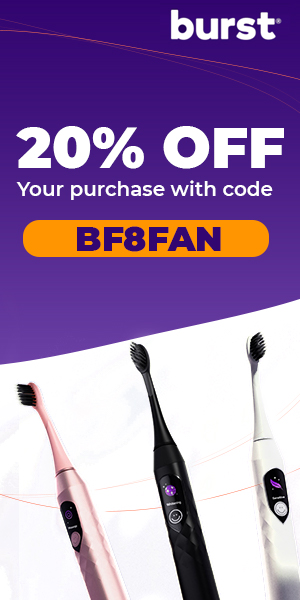When it comes to taking care of your teeth, flossing is one of the most important steps you can take. Flossing helps remove plaque and food particles that your toothbrush can’t reach, and it helps promote gum health while reducing your chances of tooth loss.
While flossing may seem like a tedious task, the benefits of flossing are undeniable, so learning how to floss correctly is an essential part of maintaining good oral health.

What are the Different Ways to Floss My Teeth?
Traditional Floss
Most people learn how to floss with traditional flossing string. This is the spool of disposable string or flossing tape that you wrap around your fingers.
Disposable Floss Picks
Another way to floss your teeth is to use a disposable flossing device, such as a floss pick. There are different sizes and shapes, depending on your smile and dexterity level. People with braces will need special flossing picks since regular ones won’t fit between their teeth.
Water Flossers
If you want to know how to floss without using string floss, water flossers are your go-to. Water flossers reach around everything, whether it’s braces, bridges, or dental implants. Just be warned, they can be a little messy and are not a 100% substitute for string floss!
How to Use Traditional Flossing String
Before you begin, it’s important to choose the right floss for you. There are waxed and unwaxed floss options available, and depending on the size and spacing of your teeth, one might work better than the other. If you have difficulty handling floss, pre-threaded flossers can make the task easier.
Once you have your floss in hand, here’s how to get started:
• Wrap most of the floss around the middle finger on one of your hands. Wrap the remaining floss around the same finger of your other hand.
• Grasp the floss tightly with your thumbs and index fingers and leave an inch or two of floss to work with.
• Gently slide the floss in between your teeth and curve it around the base of one of your teeth.
• Gently rub the floss against the side of your tooth using an up-and-down motion. The floss should go under the gumline like in this video: Floss Visual
• After you’ve cleaned that tooth, lift the floss up and over your pointed gum tissue and repeat the process on the tooth next to it.
• As you move throughout your mouth, wrap the dirty floss around one finger while unwrapping new, clean floss from the other hand.
Why Should I Floss?
Taking the time to floss daily is a critical step in your oral health. When done correctly, it can help prevent gum disease, cavities, tooth loss, and bad breath. With a little practice and dedication, flossing can become a simple and effective part of your dental care routine.
Flossing removes plaque and food particles that brushing alone can’t reach, helping to reduce your risk of infection and oral disease.

Flossing FAQs
Q: How often should I floss?
A: The American Dental Association recommends flossing at least once a day. Ideally, you should floss right before you go to bed to get rid of any food particles or bacteria that may have built up throughout the day.
Q: What type of floss should I use?
A: Any type of floss will do, as long as it’s properly fitted between your teeth and gently moved around in a C-shape motion. Generally speaking, waxed floss tends to slide easier between the teeth and works best for tight spaces. Unwaxed or tufted floss works great for larger gaps and is easier to control.
Q: What if my gums bleed when I floss?
A: Bleeding gums can be caused by a number of factors, but it’s usually due to a case of gingivitis or gum disease. Flossing every day can help reverse infections like gingivitis, but it may take daily flossing for at least 10-14 days to see a difference. Generally speaking, healthy gums don’t bleed when you brush and floss correctly. If you’re concerned, definitely consult with your dentist or dental hygienist.
Q: How much floss should I use?
A: You should use about 18 inches of floss for each flossing session. Wrap the floss around your middle fingers, and then hold it between your index fingers and thumbs so that you can wrap/unwrap as needed to use clean string throughout your mouth.
Here is a visual on how long floss should be: Flossing Length
Q: How do I floss my teeth?
A: Gently slide the floss up and down the sides of each tooth, making sure to get below the gum line. Be sure to curve the floss around each tooth in a C shape, using a new section of floss as you move from one tooth to the next. Don’t forget to floss the backside of your last molars.
Here is a video on how to floss the back molars: The #1 Missed Spot When Flossing
Q: Are there any tips or tricks for flossing?
A: There are a few ways to make flossing easier and more comfortable. If you have larger hands, try using flossers with a built-in handle for extra grip and reach. If the floss shreds easily, try a waxed variety, as this type is more resistant to breakage. Never force the floss out from between your teeth; if needed, slide it out through the side.
I have a technique that I call “The Finger Chopstick” technique, which can be helpful for reaching far back into the mouth. You can watch it here: Finger Chopstick Technique
Q: What should I do if my gums bleed?
A: Bleeding gums are common when you first start flossing, especially if you’ve gone a long time without flossing. To help prevent further damage, make sure you floss gently. After a few days of flossing, your gums should adjust, and the bleeding should subside. If the bleeding persists or gets worse after two weeks, see your dentist, as this could be a sign of a more serious problem.
Q: What’s the Best Floss to Use?
A: My favorite string floss is Cocofloss.
It comes in several different fun flavors, and it has a thicker, textured surface that is great for cleaning plaque and food particles off of your teeth. My favorite flavor is Strawberry.
My favorite water flosser is the Waterpik.
It is well built and lasts a very long time compared to many of the other Water flossers I have tried.
If you have braces, it can be very tedious to floss! My favorite flossers for braces are from Platypus:
These curve underneath the wire so you don’t need to thread the floss through manually- game changer!
Flossing your teeth is a crucial part of keeping your teeth and gums healthy. It takes time to get used to the process and the sensations, but it will get easier the more you do it. Keep up with a daily flossing routine, and you’ll soon see the benefits of cleaner, healthier teeth!





















